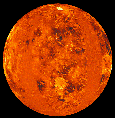A global view of the surface of Venus from Magellan.
Click on image for full size
NASA/JPL
Venus Inside and Out
Venus is the second planet from the Sun, and is Earth's closest
neighbor in the solar
system. Venus is the brightest object in the sky after the Sun
and the Moon, and sometimes looks like a bright
star in the morning or evening sky.
The planet is slightly smaller than Earth, and its
interior is similar to Earth.
We can't see the
surface of Venus from Earth, because it
is covered with thick clouds that strongly reflect sunlight. However,
space missions to Venus have
shown us that its surface is covered with craters, over 1600 major volcanoes,
mountains, large highland terrains, and vast lava plains. The surface of
Venus is not where you'd like to be, with temperatures reaching more
than 450C (approaching 900F - high enough to melt lead),
an atmosphere 90 times heavier than
our own, and clouds of sulfuric acid floating
around to top it off!
You might also be interested in:

How did life evolve on Earth? The answer to this question can help us understand our past and prepare for our future. Although evolution provides credible and reliable answers, polls show that many people turn away from science, seeking other explanations with which they are more comfortable.
...more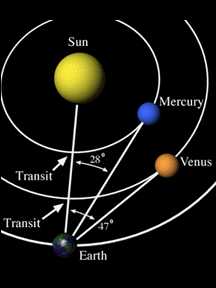
Venus and Mercury, the innermost planets in the solar system, always appear only a small distance away from the Sun in the sky. Mercury is so small and so close to the Sun (always within 28 degrees) that
...more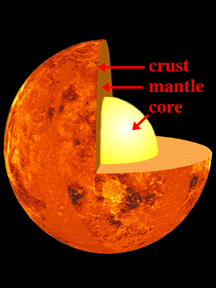
Venus is a slightly smaller than the Earth, with a diameter 95% that of Earth (12,103 km) and a mass 81% that of Earth. If we could walk around on the surface of the planet (without being killed by the
...more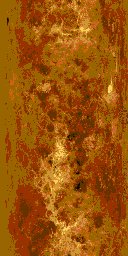
This is a map of the surface of Venus (turned sideways!). As can be seen on the map, the surface of Venus consists of 2 large continents with mountain ranges, and a few large islands. There are many craters,
...more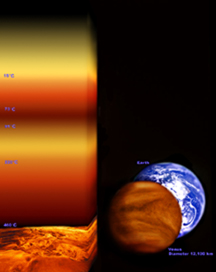
The atmosphere of Venus is very hot and thick. You would not survive a visit to the surface of the planet - you couldn't breathe the air, you would be crushed on by the enormous weight of the atmosphere,
...more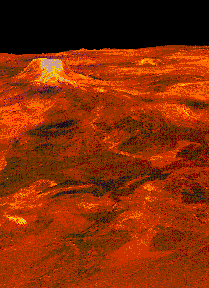
Volcanic rises are more like islands than a continents. They are broad, sloping highlands over 1000 km across. Measurements suggest that there is hot magma deep beneath these rises that helps to buoy them
...more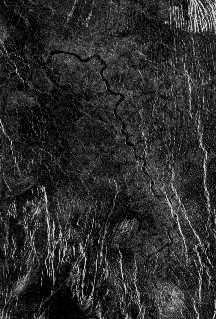
This image clearly shows a channel where something once flowed. Without proper measurements, scientists can only guess what sort of liquid may have once flowed through this channel. On Earth, such channels
...more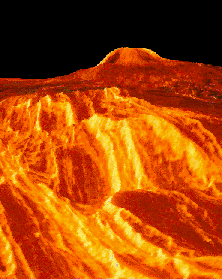
This is a Venus dome viewed from the ground. The Magellan radar-mapper made a view like this possible.
...more


